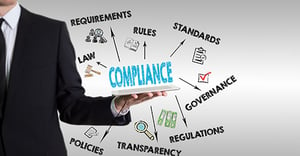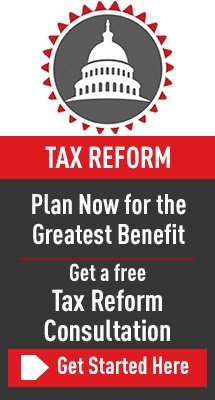 Congress has yet to tackle several outstanding uncertainties frustrating both businesses and individual taxpayers.
Congress has yet to tackle several outstanding uncertainties frustrating both businesses and individual taxpayers.
The Tax Cuts and Jobs Act, for example, contains several “glitches” requiring legislative fixes. Congress also has neglected to pass the traditional “extenders” legislation that retroactively extend certain tax relief provisions that expired at the end of an earlier year, in this case 2017.
TCJA Glitches
The sprawling TCJA signed into law in late 2017 contains some inadvertent glitches that range from a lack of clarity to significant drafting errors. In some cases the glitches may produce unintended and costly consequences. Here are examples of two glitches that still need to be addressed and one that has been addressed recently:
The “retail” glitch: This prevents retailers, restaurants and other businesses from enjoying 100% bonus depreciation on certain assets. Before the TCJA’s enactment, qualified retail improvement property, qualified restaurant property and qualified leasehold improvement property were depreciated over 15 years under the modified accelerated cost recovery system (MACRS) and over 39 years under the alternative depreciation system (ADS).
 The TCJA classifies all of these property types as qualified improvement property (QIP). QIP generally is defined as any improvement to the interior of a nonresidential real property that’s placed in service after the building was placed in service.
The TCJA classifies all of these property types as qualified improvement property (QIP). QIP generally is defined as any improvement to the interior of a nonresidential real property that’s placed in service after the building was placed in service.
Congress intended QIP that is placed in service after 2017 to have a 15-year MACRS recovery period and a 20-year recovery under the ADS. Because 15-year property is eligible for bonus depreciation, Congress also intended QIP to be eligible for that break.
Yet, the 15-year recovery period for QIP doesn’t appear in the statutory language of the TCJA, even though it’s found in the Joint Explanatory Statement of Congressional Intent. Until technical corrections are made, therefore, QIP has a 39-year MACRS recovery period, making it ineligible for bonus depreciation.
In late March 2019, a bipartisan bill that would fix the error was introduced in the U.S. House of Representatives. The Restoring Investment in Improvements Act mirrors bipartisan legislation introduced in the Senate in mid-March. But many Democrats in Congress haven’t supported this and other TCJA fixes, due to their complaints about how the law was enacted. Some lawmakers advocate tying such fixes to other tax code changes that might otherwise come up short on the votes necessary for passage.
In the meantime, taxpayers who have invested in QIP might consider cost segregation studies. By separating out QIP from other types of property, they could still qualify for some bonus depreciation.
READ MORE: Minimizing Tax Liability without QIP Guidance
Effective date glitch for the NOL deduction: The TCJA implemented several changes to deductions for net operating losses (NOLs). Specifically, it limits the deduction to 80% of taxable income, eliminates most NOL carrybacks and allows unlimited carryforwards (vs. 20 years under prior law).
The statutory text states that changes to carrybacks and carryforwards apply to NOLs arising in taxable years ending after December 31, 2017 — but the Conference Report says they apply to NOLs arising in taxable years beginning after December 31, 2017. The statute and the report agree that the 80% limitation applies to losses arising in taxable years beginning after December 31, 2017. Because statutory language controls, a mismatch now exists between the effective dates for the 80% limitation and the changes to NOL carrybacks and carryforwards.
Congress’s Joint Committee on Taxation has confirmed that all of the changes should apply to NOLs in tax years beginning after 2017. It notes, though, that technical corrections may be necessary. As of this writing, no correcting legislation has been introduced in Congress.
READ MORE: IRS: Rental Real Estate Owners Qualify for QBI; Other New Rules
The “grain” glitch: This is one glitch that has been addressed. An error in the Section 199A deduction for pass-through entities incentivized farmers to sell their crops to cooperatives, rather than to private businesses. The deduction typically is referred to as the qualified business income (QBI) deduction, but Sec. 199A actually had two parts — one for QBI and one for qualified cooperative dividends (QCD).
The QBI deduction was based on the net amount of business income, but the QCD was based on the gross amount of sales. In addition, the QCD deduction wasn’t subject to the same limitations as the QBI deduction (for example, the wage limit and income-related phaseouts).
In other words, the deduction for sales to co-ops was more generous than the deduction for income from sales to businesses. In some circumstances, farmers could have avoided income taxes altogether.
But the appropriations bill President Trump signed on March 23, 2019, includes a section addressing this glitch. It eliminates the QCD concept, leaving farmers with the same QBI deduction as other pass-through businesses have, subject to the same limitations. The law also revives the former Sec. 199 domestic production activities deduction for cooperatives, allowing a deduction of 9% of the qualified production activities (limited to 50% of the W-2 wages of the cooperative), which generally is passed through from the cooperative to its members.
Proposed Tax Extenders
Many of the income tax provisions that Congress enacts are temporary. As a result, Congress routinely temporarily reauthorizes some of these more popular provisions before or after they expire.
In late February 2019, Sens. Chuck Grassley (R-IA) and Ron Wyden (D-OR) introduced the Tax Extender and Disaster Relief Act of 2019. Among other things, the legislation would extend through 2019 more than two dozen tax breaks that expired at the end of 2017, including the:
- New Energy-Efficient Home Credit ($1,000 or $2,000 per home for eligible manufacturers of qualified energy-efficient residential homes),
- Exclusion from gross income of discharge of qualified principal residence debt (up to $2 million for married couples filing jointly and $1 million for other taxpayers),
- Mortgage insurance premiums deduction (phasing out for taxpayers with adjusted gross income over $100,000 or, if married filing separately, $50,000),
- Deduction for qualified tuition and related expenses (up to $4,000 per year subject to income limitations), and
- Empowerment zone tax incentives, including tax-exempt bond financing, a wage credit, accelerated depreciation on qualifying equipment and capital gains tax deferral in designated geographic areas.
As of this writing, corresponding legislation hasn’t been introduced in the U.S. House of Representatives.
A Waiting Game
In light of the current political climate in Washington, D.C., it remains to be seen whether any of the outstanding issues will be resolved in the near future. We’ll keep you apprised of any updates. Contact us with any questions.
© 2019





